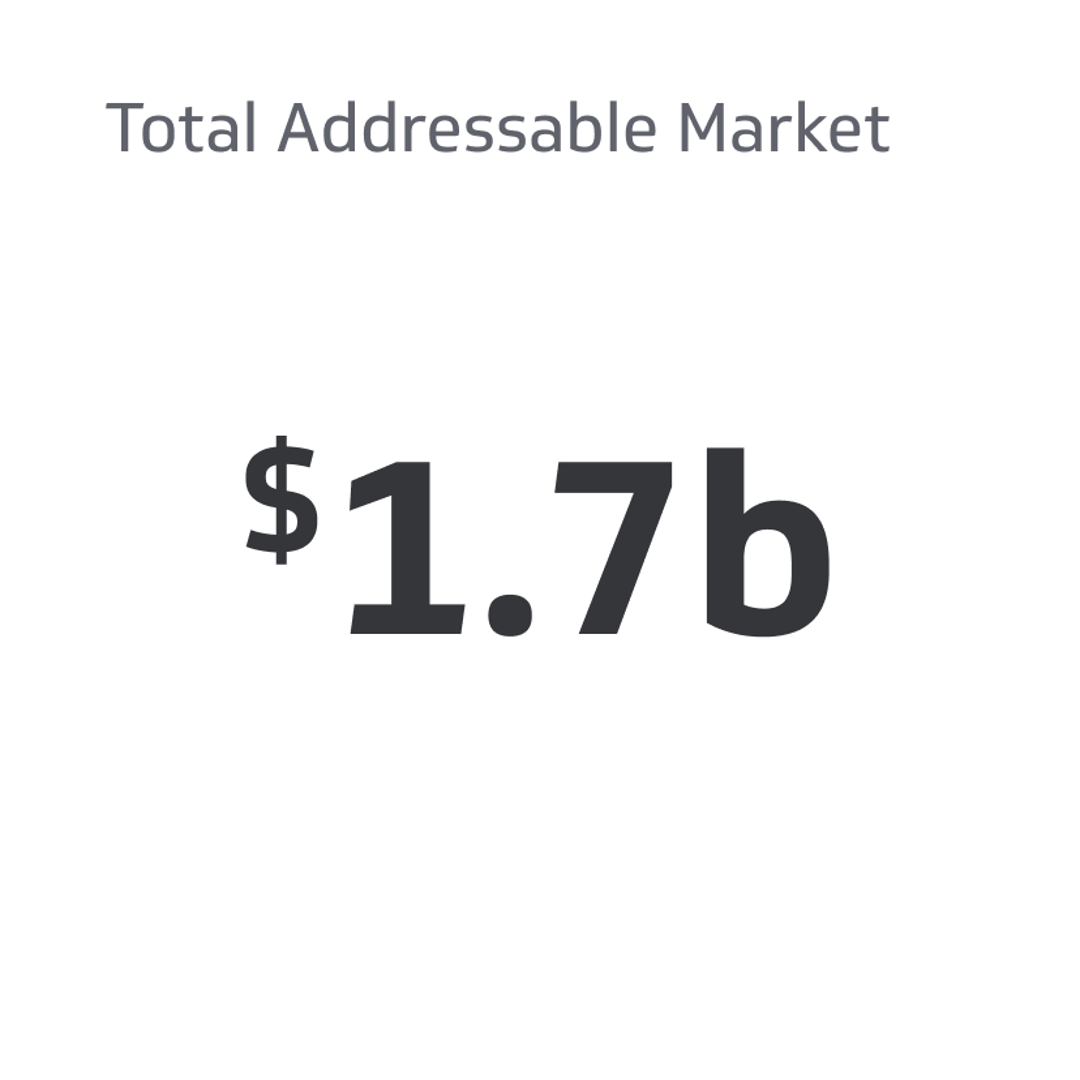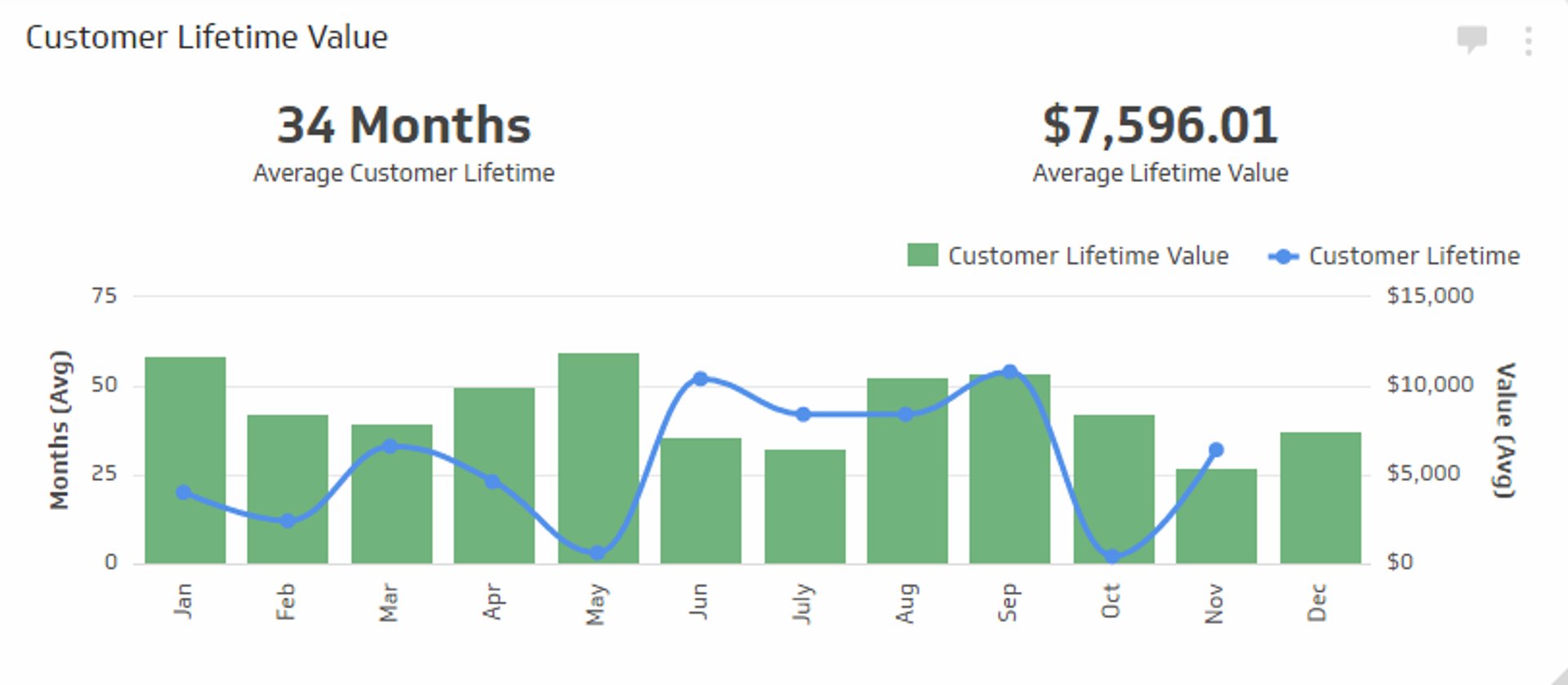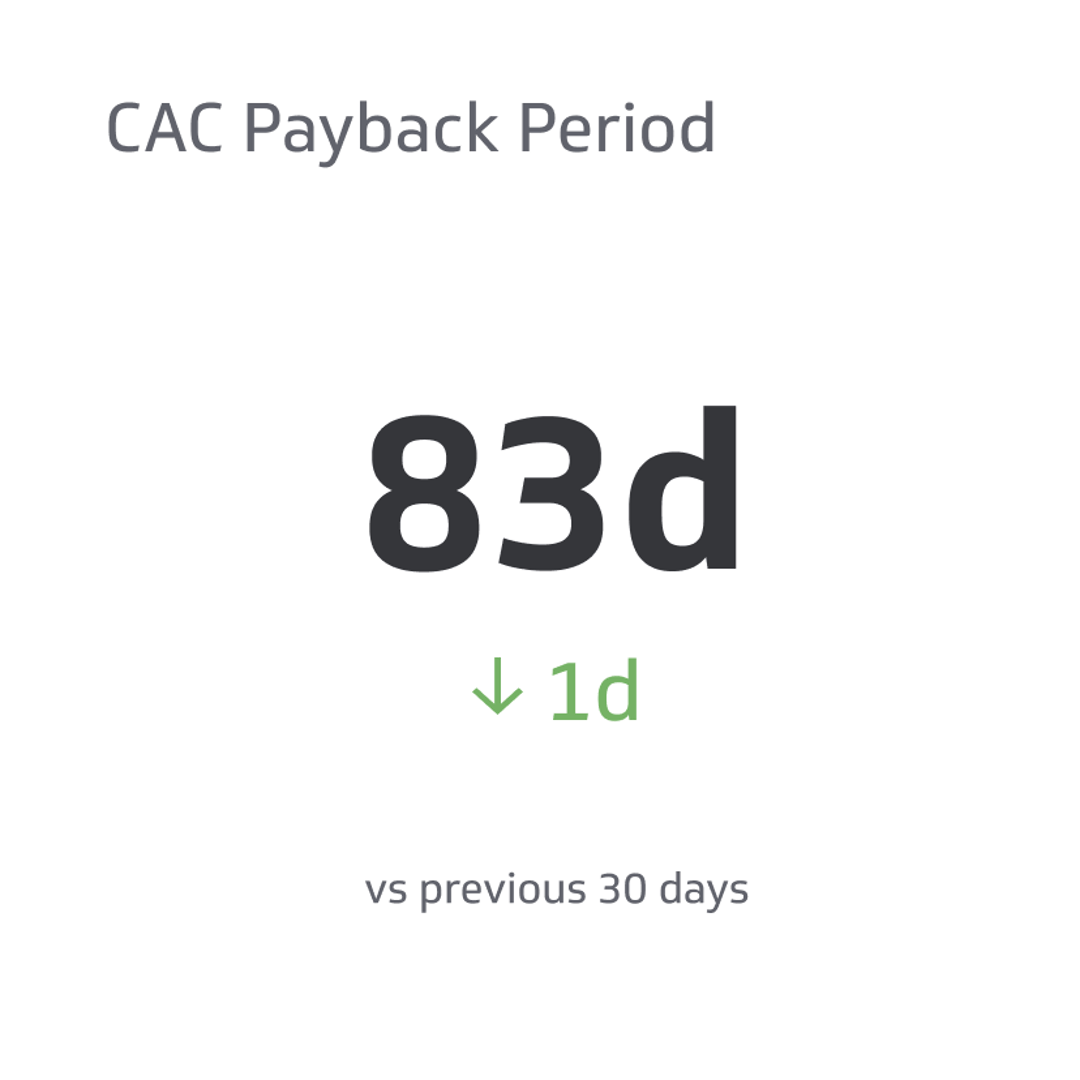Total Addressable Market (TAM)
This metric is used to estimate the total revenue opportunity for a specific product or service.
Track all your SaaS KPIs in one place
Sign up for free and start making decisions for your business with confidence.

If you're running a business, staying ahead of the competition is key to success. To do that, you need to have a solid strategy that anticipates industry trends and identifies potential opportunities for growth. That's where analyzing your Total Addressable Market (TAM) comes in.
Whether you're a seasoned marketer or a new business owner, understanding TAM can help you identify untapped markets, optimize your product offerings, and stay ahead of the competition.
In this article, we'll explore what TAM is, how it can help you understand your business's potential for growth, and why it's essential to consider when developing your business strategy.
What Is TAM?
In the business world, having a clear� understanding of the market potential is crucial. One tool commonly used to estimate the total revenue opportunity for a specific product or service is the Total Addressable Market or TAM.
By using TAM, businesses can gain insights into the potential customer base and revenue generated, which can inform decision-making and resource allocation. Plus, the main benefit of using TAM is that it can assist businesses in determining whether to invest in a new product or service line.
However, keep in mind that TAM is not a precise prediction of future sales or customers but rather an estimate of the overall economic opportunity. Despite this, it can still provide stakeholders with a helpful understanding of the size and scope of the potential market.
What Is an Example of a TAM?
A Total Addressable Market (TAM) is the pool of potential customers interested in a product or service. To explain what a TAM is, let's look at the smartphone industry. This market is enormous, with millions of potential customers worldwide.
In 2019, the global smartphone market was valued at over $5 billion, projected to grow even larger in the coming years. The TAM for smartphones wasn't just limited to individuals who wanted to buy a device. It also includes businesses, mobile carriers, and accessory companies that want to benefit from the industry's growth.
That's why businesses must understand the TAM of a particular market to develop a successful strategy and achieve commercial success. By knowing the size of the potential market and its segments, companies can create a targeted approach that meets customers' needs and maximizes profits.
What Is the Importance of TAM?
Understanding the Total Addressable Market (TAM) is vital for any business venture, as it provides essential insights into the number of potential customers or clients for a product or service.
This knowledge enables businesses to make informed strategic decisions, including introducing a new feature, entering a new market, or developing a new product. Otherwise, it can be quite challenging to estimate income, growth, or customer usage without the TAM.
Additionally, the TAM is crucial in determining if an opportunity is worth pursuing, as it can reveal a more extensive customer base than initially anticipated. It can also help businesses estimate market share variations resulting from price increases or new competitors, which can be valuable when extrapolating revenue implications.
Investors and board members seeking to evaluate a company's or product's potential often inquire about its TAM because it is a comparative measure against other investment opportunities.
In addition to its monetary value, the TAM calculation process necessitates a deeper understanding of self-identity and competitive positioning, which are essential for building sustainable ventures.
How to Calculate TAM
TAM can be calculated using three methods:
- Value theory
- Bottom-up
- Top-down
Value Theory
Value theory is a fundamental concept businesses rely on to determine the value a product provides its users. By estimating this value, businesses can set the product's price and determine how much value it can add to the customer's life. This estimation is crucial when launching new items or cross-selling products to current customers.
To calculate the value reflected in the product's price, businesses use TAM or Total Addressable Market. This tool is beneficial when launching a truly innovative product or service with no prior market data to draw from.
By analyzing the average buyer's willingness to pay for what the offering brings to the table, you can estimate the total number of individuals who would recognize that value and choose it over other options available.
This data-driven approach of using value theory to estimate a product's potential success allows for more accurate forecasting, making it an essential practice for savvy business leaders.
Bottom Up
The TAM Bottom-up approach is preferred for locating waypoints that can be extrapolated to the larger population. This approach works at a granular level, aiming to expand a small-scale ideal target market into a large-scale one. The accuracy of this approach is based on a tested data point, making it more reliable than other methods.
Businesses can gather data through secondary research or primary gathering techniques. This approach is beneficial when based on an initial set of customers, such as the ones acquired during a short pilot test. The extrapolation of data to reveal the entire TAM population is based on looking at a tiny sample size of theoretical customers.
However, using the bottom-up approach can limit the accuracy of these calculations when factors like population density, economic prosperity, and consumer preferences vary widely between nations. Therefore, it's essential to factor in these variables and avoid making vast assumptions based on a small subset.
Top Down
The top-down approach has gained popularity in market analysis. This method involves using a large population size to identify a specific market segment through elimination.
By relying on industry research and reports, analysts can generate accurate estimates of the target population and narrow it down to a more specific target market. This process can be visualized as an inverted pyramid.
One of the many benefits of this approach is the ability to access macroeconomic data transparently and accurately. This method has proven effective in providing valuable insights for businesses seeking to understand their target audience and make informed decisions regarding their marketing strategies.
For example, a graduate recruitment agency in London, UK, estimated a market size of over one million potential clients using a top-down approach. They multiplied the city's population by the percentage of individuals aged 18-24. This allowed them to tailor their strategies and focus their resources on reaching this demographic.
Plus, TAM calculations can offer a practical and data-driven approach to understanding your target audience and maximizing your business's potential.
What Is Service Available Market (SAM)
The concept of a Serviceable Addressable Market (SAM) is critical for any business seeking to attract potential clients. It refers to the total number of clients that a business can potentially serve, providing information on their size and revenue possibilities.
Understanding your SAM is crucial as it tells you who your target market is and offers insight into potential expansion strategies. As a business owner or marketer, having a good grasp of your SAM is essential to take advantage of the opportunities available in your industry.
It also helps you identify areas where you can grow your client base, a fundamental requirement for any business looking to succeed in today's highly competitive market.
What Is the Relationship Between Total Addressable Market and Service Available Market?
While TAM represents the overall market demand for a particular product or service, SAM is the subset of the TAM that a company can realistically serve. Accurately identifying their SAM allows companies to tailor their marketing and sales strategies to focus on the most promising customer segments and optimize revenue potential.
Moreover, by tracking TAM growth trends, businesses can forecast future demand and identify new opportunities for expanding their services. Therefore, a thorough understanding of the TAM/SAM relationship is crucial for businesses to achieve sustainable growth and profitability.
What Is Serviceable Obtainable Market (SOM)
To set realistic and achievable goals for any business, it's essential to comprehend the relationship between Total Addressable Market and Service Available Market.
The Serviceable Obtainable Market is a projection of the percentage of the market share a company can capture based on its resources and capabilities. This projection, also known as SOM, assists a business in making informed marketing and operational decisions by setting boundaries on what it can realistically achieve.
What Is the Relationship Between Service Obtainable Market and Total Addressable Market?
The SOM represents the portion of the TAM that a business can feasibly capture, given its resources, capabilities, and market position. While the SOM may be smaller than the TAM, it still offers a valuable opportunity for revenue and growth.
By understanding the SOM-TAM relationship, businesses can focus on specific customer segments, tailor their marketing strategies to these segments, and allocate resources more efficiently. This understanding can help businesses maximize their ROI and achieve long-term success.
Limitations of TAM
TAM, or Total Addressable Market, has a few limitations when making strategic business decisions. Here are a few of them:
TAM Is Mostly an Estimate
The Total Addressable Market (TAM) is an essential tool used in the business world for assessing a market's potential. However, computing TAM involves several assumptions that are not always disclosed, leading to potential inaccuracies.
For example, TAM is usually estimated through either a top-down or bottom-up approach, which may overlook key drivers that affect market growth. Additionally, projections are based on a static set of variables, assuming no significant changes in the market while these variables remain constant.
These limitations can impact the accuracy of TAM as a SaaS metric and should be considered when making strategic business decisions.
TAM Can Be Misinforming
Using TAM or Total Addressable Market has limitations, including the potential danger of misinforming stakeholders about the market's size.
Startup entrepreneurs often mention the overall market size to impress investors or potential partners, even when the startup is still in the conceptual stage. However, such an approach can lead to inaccurate estimates of the startup's TAM, ultimately harming its growth and profitability.
For instance, if a startup claims to capture 1% of a market worth $3.3 billion, its TAM won't necessarily be $3.3 billion. Suppose the startup only specializes in ski gear production and sales; its TAM will only be a fraction of the total ski and snowboard market.
Therefore, it's crucial to use TAM accurately and judiciously, with a clear understanding of the startup's target market and products.
Doesn't Account for Disruptive Products
One of TAM's limitations lies in its top-down approach, which cannot account for the emergence of new and disruptive goods.
A prime example of such goods is Uber, which has created a new market for on-demand transportation and significantly increased the number of yearly cab rides, revolutionizing the transportation industry.
Therefore, it is essential to be mindful of TAM's limitations and avoid relying solely on its predictions when making decisions about technology adoption.
Why TAM Is Important for B2B and SaaS
The importance of the Total Addressable Market (TAM) cannot be underestimated, particularly for B2B and SaaS companies. Investors often consider the TAM calculations a key indicator of a company's potential success.
By clearly understanding your market and how your product fits into it, you can demonstrate your ability to make informed decisions that drive your company's growth. This is particularly important in industries with lengthy sales cycles and substantial deal sizes.
Plus, knowing who your ideal customers are and how many exist can enable you to make strategic decisions that can significantly impact your company's bottom line.
Conclusion
Overall, TAM is a powerful tool that enables businesses to gain insights into the market potential and make informed decisions that drive growth and success.
TAM provides businesses with data on the addressable market size that can influence product pricing, sales efforts, and marketing tactics. By understanding the potential customer pool size, companies can ensure that their decisions align with the potential of their products or services.
TAM is also helpful in guiding business owners on whether to pursue specific markets that may have already reached saturation or have lower demand than other areas.
Through the analytical use of value theory, bottom-up analysis, and top-down approaches, businesses can clearly understand their addressable market and how their investments should be allocated accordingly for optimal success.



